 Available for Import
Available for Import
MO-4000 system
Manufacturer:
Price:
Request Quote
Bulk pricing available
FOB, CIF & EXW terms available
Key Highlights
- Made in Russia - engineered for durability
- Suitable for challenging environments
- Lower cost of ownership than European alternatives
- Bulk orders available with volume discounts
- Documentation and customs clearance assistance provided
Description
The system of water treatment, water storage and water supply is designed for purification of water from open reservoirs, wells and boreholes from suspended solids, colloids, disinfection from bacteria and viruses, including spore warfare forms of BS, decontamination from SNF of organic and inorganic origin, including chemical warfare agents, decontamination from radioactive substances, purification from iron, manganese, copper, sulphur, phosphorus compounds, organic substances (including petroleum products) and dissolved salts, including compounds of one-, two- and polyvalent metals, storage of treated water and delivery of treated water under pressure to the consumer network.
The system is designed for water treatment in case of contamination of water intake with radioactive, poisonous substances and bacteriological agents, both as a result of sabotage and as a result of man-made and natural disasters.
The nominal capacity of the system is 4.2 m3/h (100 m3/day), which is sufficient to supply:
- 400 persons according to the consumption norms established for the urban population (250 litres/person/day);
- 1,250 people according to the consumption norms established for APL-500 military personnel (80 litres/person/day);
- 20,000 people when water is used only for drinking and cooking.
The system is supplied in full factory readiness, equipped with a stock of consumables, a set of tools and spare parts. The system deployment time is 2 hours.
The system consists of the following units, mounted in a single housing: a unit for storing raw water, water treatment unit, storage unit for purified water, a unit for discharging purified water into the consumer network.
In appearance the system is a 20-foot container type 1C of olive-green colour.Technical characteristics of the system Water treatment technology. Source water is accumulated in the source water storage unit, from where it enters the blocks of multipatron prefilters, where it is purified from mechanical impurities and dissolved organic substances. Then the water is fed to a two-zone countercurrent reactor for treatment with high ozone concentration (not less than 9% wt.).
Ozone is produced in high-voltage high-frequency barrier discharge generators. High ozone concentration is achieved by applying a special technology of high-efficiency cooling of high-voltage electrodes (anodes) of generators.
Oxygen with concentration not lower than 95% is used as a source gas for ozone production, produced on site in oxygen concentrators, which are a part of the water treatment system equipment. To increase the life of the molecular sieves of the oxygen concentrators, the air entering the concentrators is filtered and dehumidified.
In the two-zone countercurrent reactor there is a complete disinfection of water from bacteria and viruses, including spore warfare forms of BS, oxidation with conversion into insoluble state of compounds of polyvalent metals and semi-metals (iron, manganese, copper, cobalt, mercury, bismuth, thallium, arsenic, antimony, etc.), complete or partial removal of bismuth, thallium, arsenic, antimony, etc.).etc.), complete or partial destruction of organic compounds (including complex organophosphorus, organochlorine and arsenic-containing compounds). After ozone treatment in the reactor, organic compounds are either transformed into harmless substances (H2O, CO2) or undergo partial destruction to form less toxic and easily sorbed intermediate compounds.
From the reactor, water enters the inlet of a high-pressure pump and is pressurised for treatment. Water enters the blocks of multipatron postfilters, where it is purified from mechanical impurities formed during ozone oxidation and residues of dissolved organic substances of ANM material. Destruction of ozone dissolved in water also takes place here.
Further, the treated water enters the nanofiltration membrane housings, where it is separated by membranes into desalinated permeate and salt-enriched concentrate. The concentrate is discharged from the treated water block into the sewer.
To increase the interflush life of the nanofiltration membranes, an antiscalant is dosed into the water before nanofiltration.
The treated water passes through a water meter, is supplied with a preserving dose of sodium hypochlorite and enters the storage tank of the treated water storage unit.
From the storage tank the treated water is supplied under pressure to the consumer's water supply network. The design of the water-dispensing unit allows to connect the system to the existing water supply networks with pumps of the second lift, to carry out water discharge without connection to the networks (in the tank), to supply water to consumers through temporary pipelines, using the pumps of the system for injection of treated water..
The system is designed for water treatment in case of contamination of water intake with radioactive, poisonous substances and bacteriological agents, both as a result of sabotage and as a result of man-made and natural disasters.
The nominal capacity of the system is 4.2 m3/h (100 m3/day), which is sufficient to supply:
- 400 persons according to the consumption norms established for the urban population (250 litres/person/day);
- 1,250 people according to the consumption norms established for APL-500 military personnel (80 litres/person/day);
- 20,000 people when water is used only for drinking and cooking.
The system is supplied in full factory readiness, equipped with a stock of consumables, a set of tools and spare parts. The system deployment time is 2 hours.
The system consists of the following units, mounted in a single housing: a unit for storing raw water, water treatment unit, storage unit for purified water, a unit for discharging purified water into the consumer network.
In appearance the system is a 20-foot container type 1C of olive-green colour.Technical characteristics of the system Water treatment technology. Source water is accumulated in the source water storage unit, from where it enters the blocks of multipatron prefilters, where it is purified from mechanical impurities and dissolved organic substances. Then the water is fed to a two-zone countercurrent reactor for treatment with high ozone concentration (not less than 9% wt.).
Ozone is produced in high-voltage high-frequency barrier discharge generators. High ozone concentration is achieved by applying a special technology of high-efficiency cooling of high-voltage electrodes (anodes) of generators.
Oxygen with concentration not lower than 95% is used as a source gas for ozone production, produced on site in oxygen concentrators, which are a part of the water treatment system equipment. To increase the life of the molecular sieves of the oxygen concentrators, the air entering the concentrators is filtered and dehumidified.
In the two-zone countercurrent reactor there is a complete disinfection of water from bacteria and viruses, including spore warfare forms of BS, oxidation with conversion into insoluble state of compounds of polyvalent metals and semi-metals (iron, manganese, copper, cobalt, mercury, bismuth, thallium, arsenic, antimony, etc.), complete or partial removal of bismuth, thallium, arsenic, antimony, etc.).etc.), complete or partial destruction of organic compounds (including complex organophosphorus, organochlorine and arsenic-containing compounds). After ozone treatment in the reactor, organic compounds are either transformed into harmless substances (H2O, CO2) or undergo partial destruction to form less toxic and easily sorbed intermediate compounds.
From the reactor, water enters the inlet of a high-pressure pump and is pressurised for treatment. Water enters the blocks of multipatron postfilters, where it is purified from mechanical impurities formed during ozone oxidation and residues of dissolved organic substances of ANM material. Destruction of ozone dissolved in water also takes place here.
Further, the treated water enters the nanofiltration membrane housings, where it is separated by membranes into desalinated permeate and salt-enriched concentrate. The concentrate is discharged from the treated water block into the sewer.
To increase the interflush life of the nanofiltration membranes, an antiscalant is dosed into the water before nanofiltration.
The treated water passes through a water meter, is supplied with a preserving dose of sodium hypochlorite and enters the storage tank of the treated water storage unit.
From the storage tank the treated water is supplied under pressure to the consumer's water supply network. The design of the water-dispensing unit allows to connect the system to the existing water supply networks with pumps of the second lift, to carry out water discharge without connection to the networks (in the tank), to supply water to consumers through temporary pipelines, using the pumps of the system for injection of treated water..
Specifications
Length
6058 mm
Width
2438 mm
Height
2438 mm
Average treated water capacity
4.2
Peak flow rate of treated water
8
Purified water pressure at the system outlet
0.2 MPa
System dry mass
6000 kg
System power consumption
B1/B8 2100/900 MHz kW
Drainage water flow rate
2.2
Drainage water pressure at the system outlet
0...0.6 MPa
Source water pressure at the system inlet
0.6 MPa
Permissible loads on the system enclosure
10
Life before overhaul
10000
Assigned resource
80000
Ambient temperature during storage and operation
-50...50 °C
Mark
BBG pc
Power supply (380 V)
SBVVBG
Note: All specifications are provided by the manufacturer and may be subject to change. Please contact us to confirm the latest specifications before placing your order.
Share your requirements for a quick response!
Instant response in 15 minutes
Best wholesale prices guaranteed
Direct from manufacturer
Delivery & Payment
Shipping Terms
Delivery Time
Sea freight: 30-60 days (depending on destination)
Air freight: 14-21 days (for urgent orders)
Payment Methods
Similar Products You May Be Interested In
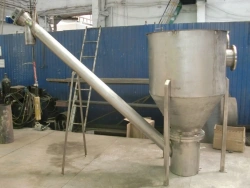
Tangential sand trap
View Details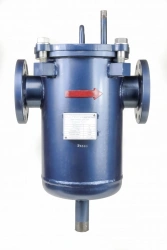
Magnetic sludge filter type WPFS
View Details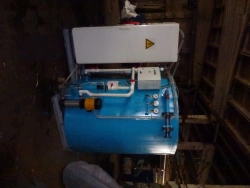
Drinking water preparation station SPPV-10
View Details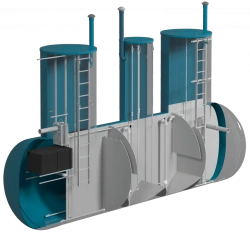
Biological treatment unit of LOS-R model
View Details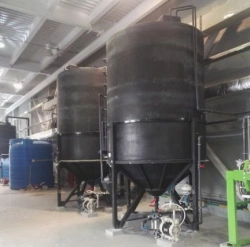
Complexes for automatic treatment of incoming wastewater from electroplating-chemical plants, including those with water recycli
View Details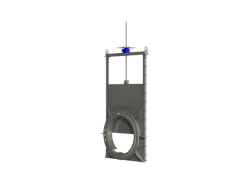
Vökker FR-4R-P1-TR Shield Gate Valve DN600
View Details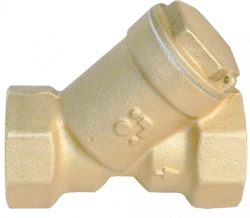
LATUNE muffled mesh filters for nominal pressure not more than 2,5 MPa (25 kgf/cm²) of nominal bore (nominal diameter).
View Details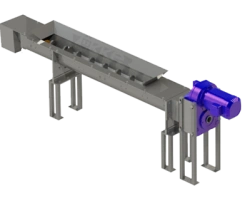
Screw conveyor VÖKKER SHT-PV2-L6000
View Details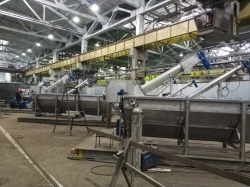
Mechanical cleaning grids
View Details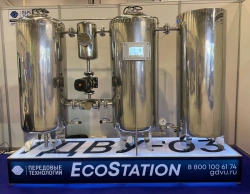
Hydrodynamic water treatment plant "GDVU-03"
View Details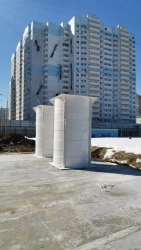
Drinking water treatment plant AEROMAG-500
View Details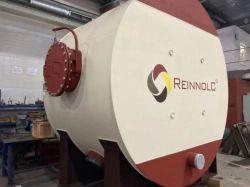
DeGasExer thermal deaerators according to TU 28.29.12-001-30793400-2020
View DetailsVerified Suppliers
All products are sourced directly from authorized Russian manufacturers
Quality Assurance
Products meet international quality standards with proper certification
Global Shipping
Reliable logistics solutions to deliver products to your location
Secure Payments
Multiple secure payment options to facilitate international transactions